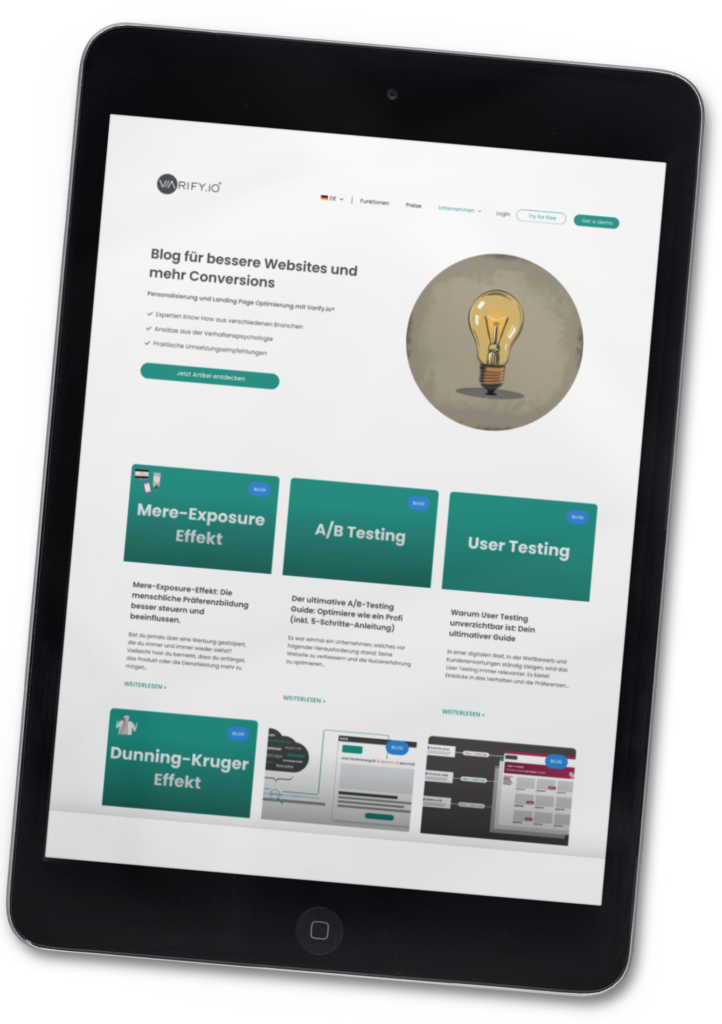
"If you try to appeal to everyone, you end up reaching no one."
Marketing without segmentation is like a watering can principle: a lot of effort, little effect.
But what if you were targeting the very customers who want to buy?
No guessing game, no wastage, just accurate messages that sell.
In this article, I'll show you how segmentation works - and how you can leave your competition far behind.

Table of contents
What is segmentation?
Segmentation means dividing your target group into smaller, clearly defined groups that have similar characteristics or needs. Instead of addressing a broad mass with the same message, you can target the interests, wishes and challenges of individual groups. Put simply, you are no longer addressing "everyone", but "the right ones".
An example: You run an online store for clothing. An offer for winter coats has little effect if it is sent to customers in hot regions. With segmentation, you can instead only address people who are actually interested in your offer - and significantly increase your chances of conversions.
Relevance of segmentation in online marketing
In online marketing, segmentation is the key to standing out in the flood of information and advertising messages. Today's customers don't just expect personalized content - they demand it. An inappropriate message often leads to you being overlooked or potential customers bouncing.
Advantages
- More relevance: Your target group gets exactly what they are looking for.
- Less wastage: You invest your budget more efficiently.
- Higher conversion rate: Personalized messages convert better - whether in ads, emails or on the website.
Examples
Email marketing:
New customers receive a welcome series, while regular customers receive exclusive offers.
Social media and ads:
You only advertise a campaign for outdoor accessories to people who live in regions with a lot of nature and have indicated "hiking" as an interest.
Content Marketing:
A blog post on "Beginner's tips for SEO" is aimed at beginners, while a technical article on "Core Web Vitals" is aimed at professionals.
Types of segmentation
Demographic segmentation
Demographic segmentation includes aspects such as age, gender, level of education and income. For example, a luxury fashion company could target people with a high income, while a children's clothing brand could focus its marketing activities specifically on young parents.
Geographical segmentation
The criteria relate to the geographical location of the customers and can include regions, countries or even individual cities. A company that offers sun cream could increase its advertising activities specifically in sunny areas
Psychographic segmentation
The characteristics relate to the customer's lifestyle, personality and social beliefs. For example, a travel provider could offer exciting adventure trips for adrenaline lovers and relaxing wellness trips for people looking for peace and quiet.
Behavior-oriented segmentation
The criteria are based on how consumers actually act, particularly in connection with a product or service. Important factors here include brand loyalty, the frequency of purchases and the intensity of use.
Tips for successful segmentation
- Work with reliable data:
Use up-to-date and precise information to understand your target groups precisely and address them in a targeted manner. - Listen to your customers:
Use your customers' feedback to refine your strategy and ensure that you always have their needs in mind. - Stay flexible:
The preferences and expectations of your target groups can change quickly. Adjust your approaches regularly to stay relevant and achieve long-term success
Avoid the following errors during segmentation
Create too many segments
An excessive division of the target group can lead to segments becoming too small and inefficient. This makes the implementation of campaigns complex and expensive.
Solution: Focus on a few, but meaningful segments that have a clear objective.
Use incorrect or irrelevant data
Incomplete, outdated or irrelevant data can mean that segments are not meaningful and miss the target group.
Solution: Only work with high-quality, up-to-date data that is relevant to your goal.
Segmentation without clear goals
Without a clear goal, segmentation quickly becomes a waste of time. It should always be linked to a concrete strategy or measure.
SolutionDefine in advance which goals you want to achieve with segmentation, e.g. improving the conversion rate or increasing customer loyalty.
Missing tests and analyses
Without tests and analyses, it is not possible to check whether the segmentation actually works. Measures could come to nothing.
Solution: Carry out regular tests and analyze the results to continuously optimize your segmentation.
Future trends in segmentation
With the advancement of technologies such as artificial intelligence and big data, segmentation is evolving from micro-segmentation to hyper-personalization. This makes it possible to tailor marketing messages and offers to the behavior and preferences of individual customers in real time.
One clear example is platforms such as Netflix or Spotify, which provide personalized recommendations based on users' previous activities and preferences.

